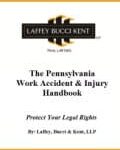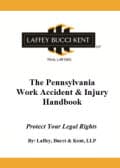[suffusion-widgets id=’4′]
Nearly two months ago, the federal Occupational Safety and Health Administration (OSHA) which is tasked with overseeing workplace safety in the U.S. issued major changes to work accident and fatality reporting requirements. These changes take effect this upcoming year, on January 1, 2015.
Related: Workplace Accidents & Injuries in PA & NJ – Safety/Health Management Programs (Part 2)
Changes to OSHA’s Work Injury & Fatality Reporting Requirements
Prior Rules
Under the prior OSHA work injury and work fatality reporting requirements, employers were required to report all work accident deaths (within 8 hours) and had to report all hospitalizations involving 3 or more injured workers.
New Rules, Effective January 1, 2015
Effective in the upcoming year, employers must report the following:
- all work accident deaths within 8 hours,
- all work accident inpatient hospitalizations (1 employee or more),
- all work amputation injuries, and
- all work injuries involving the loss of an eye.
 An amputation injury is defined as the loss of an external body part such as a limb. Complete amputation is not required. Employers will still have to report fingertip amputations and amputation injuries where the body part was able to be reattached.
An amputation injury is defined as the loss of an external body part such as a limb. Complete amputation is not required. Employers will still have to report fingertip amputations and amputation injuries where the body part was able to be reattached.
It is important to note that the OSHA work fatality reporting requirements only apply to deaths which occur within 30 days of the work accident. In addition, the hospitalization, amputation and loss of an eye reporting requirements only apply to such injuries which occur within 24 hours of the work accident.
OSHA 300 Log (Keeping Records of Work Accidents & Injuries)
These new OSHA work accident/fatality reporting requirements are separate and distinct from the duty to keep a log of work-related injuries, which apply to select employers. Employers in certain industries with over 10 employees are required to prepare and maintain logs of all work accident injuries. The new OSHA requirements amend the classes of employers required to keep these logs (i.e., OSHA 300 logs). The new rules expand the list. Effective January 1, 2015, some of the classes of employers now required to keep OSHA 300 logs include:
- bakeries,
- automotive parts/accessories stores,
- building materials/supplies dealers, and
- commercial/industrial machine and equipment rental and leasing companies.
It is important to note that the new work injury fatality reporting requirements discussed above apply to all employers under OSHA jurisdiction, even those which are partially exempt from having to keep OSHA 300 logs of work accident injuries. For instance, an employer with less than 10 employees is still required to report a work accident fatality or inpatient hospitalization of any worker.
How to File a Work Accident Injury/Fatality Report with OSHA
Reports can be made by calling OSHA’s toll free number (800)321-OSHA or by calling the OSHA regional office.
Pennsylvania OSHA Regional Office (Covers Pennsylvania, Delaware, and Maryland)
U.S. Department of Labor/OSHA
The Curtis Center-Suite 740 West
170 S. Independence Mall West
Philadelphia, PA 19106-3309
(215) 861-4900
New Jersey OSHA Regional Office (Covers New York and New Jersey)
U.S. Department of Labor/OSHA
201 Varick Street, Room 670
New York, New York 10014
(212) 337-2378
The stricter reporting requirements are intended to help OSHA identify problem industries in order to better target resources for OSHA compliance and enforcement. This is key to improving workplace safety in Pennsylvania and New Jersey. With the new reporting requirements, we can certainly expect to see employers taking workplace safety more seriously.
More from our firm’s work accident law library:
- Work Injuries & Accidents in Pennsylvania – Civil Lawsuits (October 07th, 2014) The following legal article is provided by the work accident lawyers at the Philadelphia law firm of LBK. Our lawyers pride themselves in helping injured workers obtain maximum compensation for their work injuries. Pennsylvania’s civil justice system can help injured workers …
- Pennsylvania Work Accident Lawyer: How Your Medical Bills Get Paid (Part 1) (October 03rd, 2014) Pennsylvania Work Accidents & Medical Bills – How Your Medical Bills Get Paid (Part 1) For most workers and employees, a work accident is about the furthest thing from their minds. However, knowing what to do in the event of a work accident can prevent a tremendous amount of stress. This is especially true when it …
 Order our Work Accident Handbook
Order our Work Accident Handbook
The work accident and injury lawyers at LBK wrote a book about injured workers’ legal rights. Click the book to order your FREE copy.
DISCLAIMER: This website does not create any attorney-client relationship or provide legal advice. It is crucial to speak to a qualified lawyer prior to making any decision about your case. Read full disclaimer at the bottom of this page.

